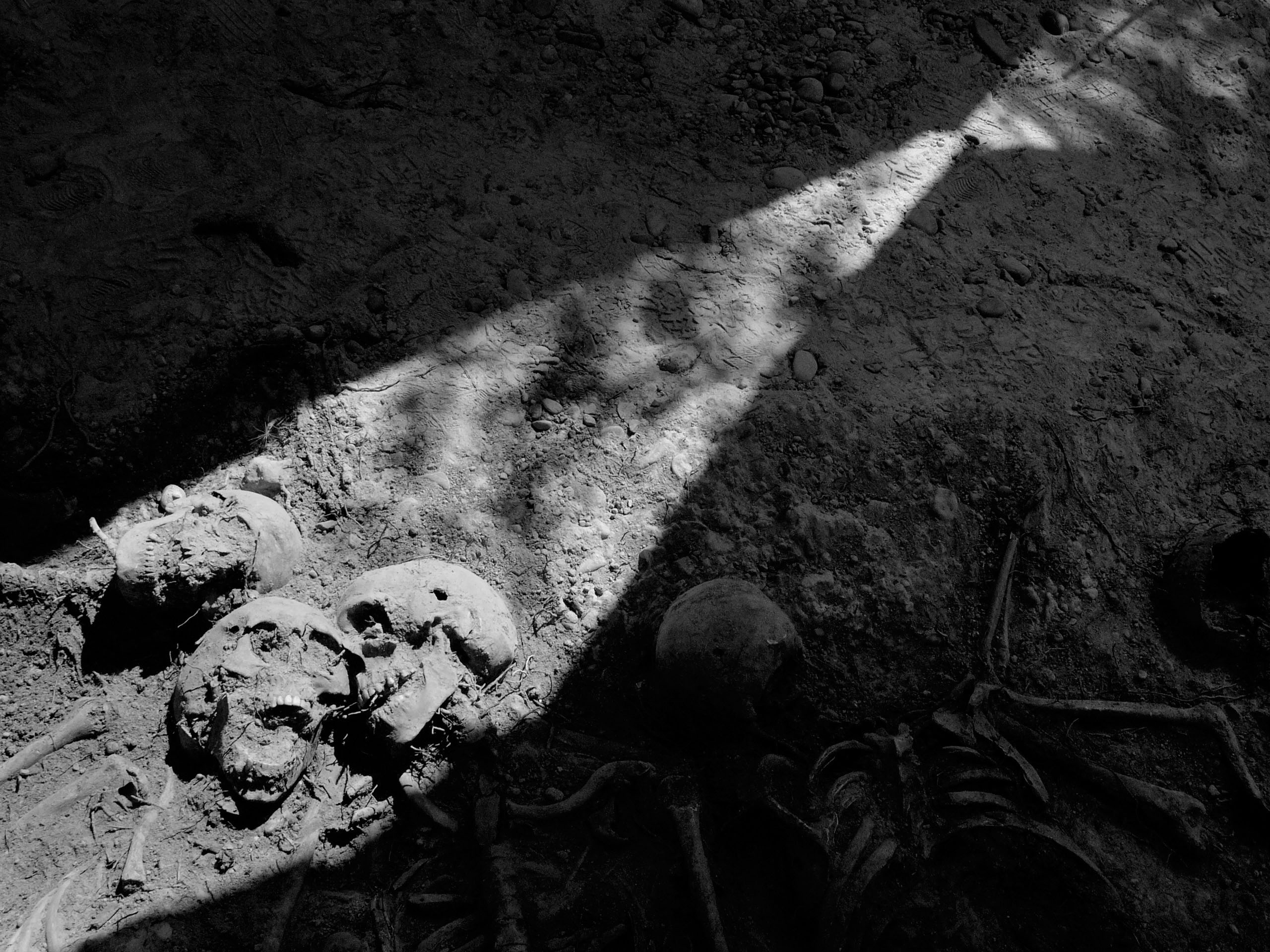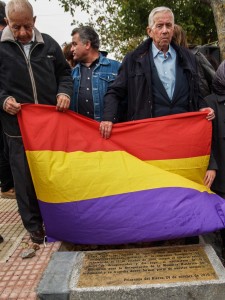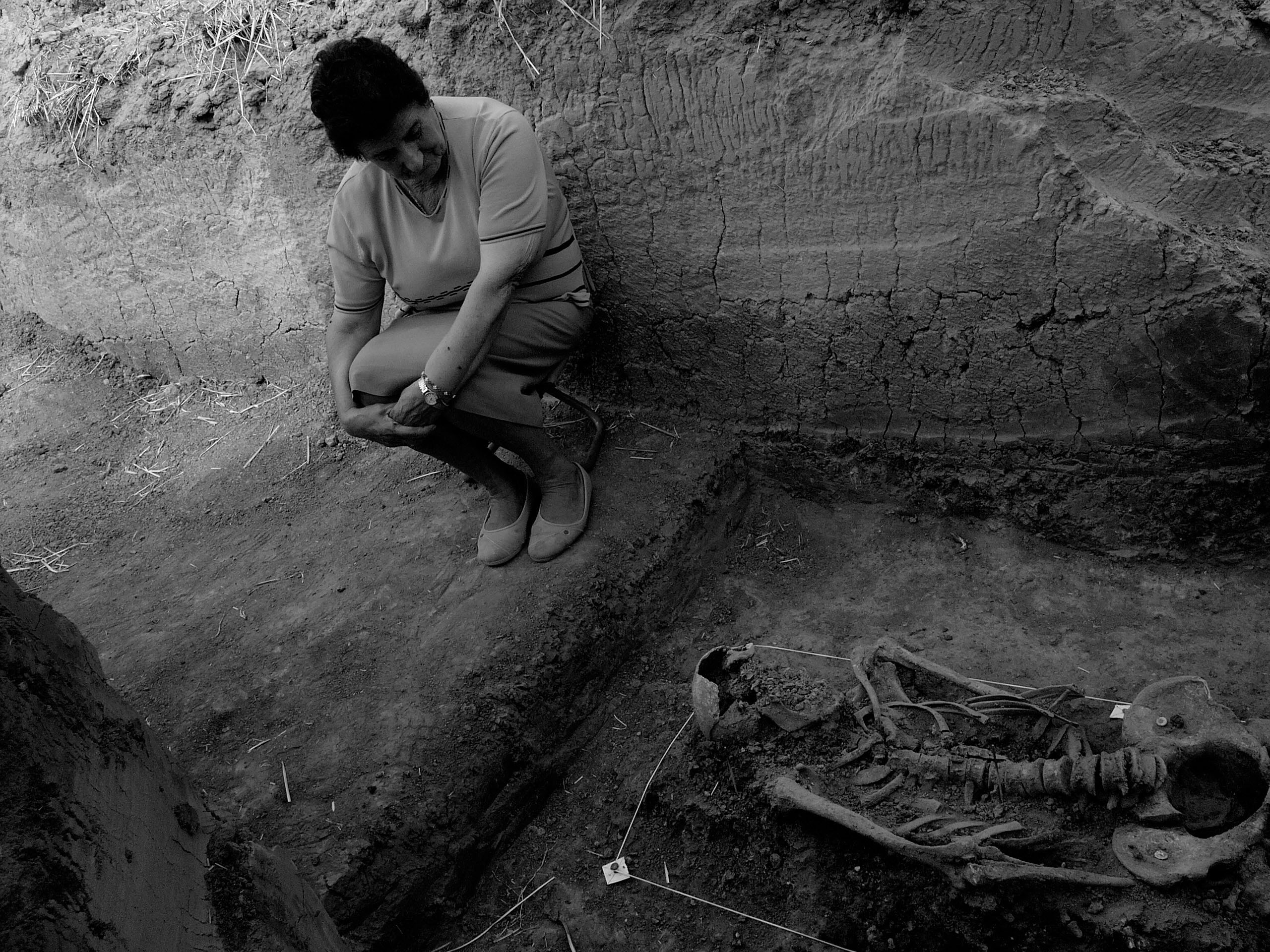Untreated Memories: Franco’s Disappeared
Some 114,000 Spaniards lay in unmarked mass graves strewn all over the Iberian Peninsula. Only Cambodia has more densely populated killing fields. These are not men and women killed at the front during the Spanish Civil War (1936-39); they are victims of systematic extrajudicial assassinations carried out by Francoist forces during and after that conflagration. Emilio Silva Faba was just one of these tens of thousands of civilians who were routinely rounded up, murdered, and thrown into unmarked ditches. The Silva family—Emilio’s widow, and their six children—like thousands of other families, never knew the precise location of Emilio’s remains, nor did they dare inquire during the four decades of dictatorship. Some 60 years would have to pass before Emilio Silva’s grandson and namesake would decide to take matters into his own hands.
The ancient Pilgrim’s Way that cuts across northern Spain toward the apocryphal tomb of Saint James the Apostle passes through the quaint town of Pereje, in the region of León known as El Bierzo. Walkers heading westward on the road to Santiago de Compostela enter the hamlet and quickly come upon a most inviting fountain of crystalline mountain spring water gurgling out of a single half-inch pipe. Even though the locals know that this is some of the best drinking water to be had for miles around, most peregrinos are deterred from quenching their thirst here because of an ominous small sign posted beside the spout: Agua no tratada (Untreated Water). So most thirsty pilgrims usually continue walking down the camino about a hundred paces past the fountain and into the main part of town, where, at the town’s bar, for one euro, they can slake their thirst with a bottle of properly “treated” water. Whether or not the bar owner is the author of that accurate, if misleading, sign back at the fountain remains a matter of speculation and controversy.
Pereje, this picturesque and picaresque village—a 10-day walk from Santiago de Compostela—is where Emilio Silva Faba was born in 1894. As a young man, like many enterprising youths from this part of Spain Silva undertook his own pilgrimage of sorts, in search of opportunities he could not find at home. He emigrated first to Argentina in 1915, where he worked at a soda factory for a few years before returning to Pereje. In 1920, he tried his luck once again, this time heading to Bridgeport, Connecticut, where his sister lived with her husband and their son, who was also named Emilio. (Silva’s nephew in Bridgeport was Emilio Núñez, who would go on to be a prominent lawyer and the first Hispanic judge ever to serve on the New York State Court of Appeals.) Emilio Silva liked what he saw in Connecticut and New York, and decided that he would stay. He planned to open a store of Spanish products in New York, catering to the city’s burgeoning community of Spanish immigrants. But first he would have to return to El Bierzo to settle some family matters and to set up some supply lines for the store. He booked a round-trip steamship ticket: New York-Vigo-New York.

One of the mass graves discovered in an excavation from July–August of 2014 at Estépar (Burgos). The grave contains twenty-six republicans who were killed by nationalists in August-September 1936. Photo Mario Modesto Mata. CC BY-SA 4.0.
As fate would have it, while on this short trip to El Bierzo in 1925, Emilio met Modesta, the love of his life. He abandoned his plans of returning to the United States and ended up opening “La Preferida”—his grocery and general store—not on Cherry Street or West 14th St. in New York’s Spanish enclaves, but rather at Calle del Viaducto #1, Villafranca del Bierzo. Emilio and Modesta married just a few months after meeting. Their first child, Emilio Jr. was born 10 months later, and over the next 10 years, as La Preferida prospered, they had five more children.
A moderate progressive small-business owner—with experience living in two other Republics, Argentina and the United States—Emilio greeted the arrival of Spain’s Second Republic (1931) with optimism and enthusiasm. He was particularly interested in the Republic’s commitment to free public and non-religious education for all, and was an active member of the middle-of-the-road political party “Izquierda Republicana,” presided over by Manuel Azaña.
On October 16, 1936, Emilio Silva Faba was arrested, driven to a remote area in the town of Priaranza del Bierzo, executed, and thrown into a ditch along with 12 other executed civilians.
Tragically, however, when the war broke out in Spain, these solid democratic credentials were enough to make Emilio Silva a marked man. Francoist forces took control of El Bierzo within days of the July 18th uprising, practically without firing a shot, and it didn’t take long for local Falangist authorities to begin to extort money and goods from Silva’s store. On the morning of October 16, 1936, Emilio Silva Faba was arrested. Later that night, he was driven to a remote area in the town of Priaranza del Bierzo, executed, and thrown into a ditch along with 12 other executed civilians. The next morning, Emilio’s oldest son—10-year-old Emilio Jr.—went to the prison where his father had been held, only to be told by the guards that his father was no longer there, that perhaps he had escaped through a window.

Villamayor de los Montes (Burgos), 2004. Exhumation of the remains of 46 individuals taken from the Burgos provincial prison on September 24, 1936, assassinated, and buried next to the road to Madrid. Photo Clemente Bernad. From Desvelados.
It could be said that Emilio Silva Faba was “disappeared” three times. First, of course, on that fateful night in El Bierzo, 1936. But he was disappeared for a second time during the long, dark night of the Francoist dictatorship, when his traumatized descendants could only speak about him in whispers, and dared not demand his remains or publicly honor his memory. And shockingly, Emilio Silva Faba—and all victims of Francoist terror — was disappeared yet again, this time in the broad daylight of Spain’s allegedly exemplary transition to democracy, when the political class which oversaw that transition determined that a new democratic regime could be built without a foundation, without disturbing the shallow graves which, all throughout the country, were—and are—the ignominious resting places of tens of thousands of victims of the Francoist dictatorship. None of Spain’s governments since the advent of democracy have paid more than lip service to the cause of truth, justice and reparations for those victims. Indeed, some of the governments, and many individual politicians and intellectuals, have been outright hostile. Former Prime Minister José María Aznar once stated: “We must recover a spirit of concord and unity which has largely been lost (…) since the Spanish transition. And you don’t do that by digging up tombs or stirring up bones.” A mayor of a small town in the province of Lugo went even further: “Those who were condemned to death during Francoism must have deserved it.”
None of Spain’s governments since the advent of democracy have paid more than lip service to the cause of truth, justice and reparations for the victims of Francoism.

Unveiling of a commemorative plaque at the site of the 2000 exhumation in Priaranza del Bierzo, Oct. 2010. Photo Oscar Rodríguez
It was in this climate of indifference and hostility that in the year 2000, Emilio Silva—the grandson and namesake of Emilio Silva Faba—undertook, like a modern day Antigone, the challenge of finding his grandfather’s remains. A journalist by training, Silva tirelessly researched the circumstances of the disappearance of the group of men who came to be known as “The Priaranza Thirteen.” “Sixty-four years later,“ Silva remembers, “I set out to find him. While I was trying to discover the site of his grave, an old man explained to me that around here there are more dead bodies outside the cemetery than there are inside. [We eventually located the mass grave, and] thanks to the selfless assistance of many people, on October 28 we were able to exhume all 13 bodies. During the exhumation process, many family members of los desaparecidos (the disappeared) came to see us and to ask us for help.” It was at that grave site that the Asociación para la Recuperación de la Memoria Histórica [ARMH] was born, with the goal of assisting others who, like Emilio Silva, wanted to recover from unmarked mass graves the remains of their loved ones, and to break once and for all the silence to which they had been sentenced.
“An old man explained to me that around here there are more dead bodies outside the cemetery than there are inside.”
Since its founding, the ARMH has received more than 15,000 emails from family members of victims requesting assistance and from informants who have information about mass graves. In its first 12 years of existence, the organization has conducted 153 exhumations, allowing hundreds of families to give their loved ones proper burials. Between 2006 and 2010, during the Zapatero administration, the Ministry of the Presidency provided some subsidies, which covered roughly 20% of the costs of the exhumations carried out in those years. On the whole, though, the work of the ARMH has been carried out thanks to the selfless efforts of an international network of volunteers.
| Year | Exhumations | Recovered Victims |
| 2000 | 1 | 13 |
| 2001 | 1 | 4 |
| 2002 | 12 | 38 |
| 2003 | 30 | 238 |
| 2004 | 13 | 155 |
| 2005 | 10 | 72 |
| 2006 | 17 | 220 |
| 2007 | 13 | 314 |
| 2008 | 24 | 111 |
| 2009 | 13 | 80 |
| 2010 | 9 | 34 |
| 2011 | 6 | 34 |
| 2012 | 4 | 17 |
| TOTAL | 153 | 1,330 |

Berlangas de Roa (Burgos), 2004. Exhumation of the remains of five inhabitants of Haza (Burgos) who were detained and assassinated in August 1936, among them the mayor of the town. The mayor’s daughter sits beside her father’s remains. Photo Clemente Bernad. From Desvelados.
In addition to the direct assistance given to the victims’ families, the organization’s advocacy and media work has attracted much-needed international attention to the shameful neglect shown by the Spanish State to the dictatorship’s victims and their families. The United Nations Working Group on Forced Disappearances, for example, now includes Spain in its reports.
If it is to be done at all, the exhumation of mass graves in Spain must be carried out as soon as possible.
In recognition of this outstanding work, the ARMH has been designated as the winner of the 2015 ALBA-Puffin Award for Human Rights Activism. The prize could not have come at a more opportune moment for the organization—and for its cause: just as the number of veterans of the Abraham Lincoln Brigade has dwindled to almost zero, so too has the number of Spaniards with first-hand knowledge about the dictatorship’s atrocities and about the location of its mass graves. If it is to be done at all, the exhumation of mass graves in Spain must be carried out as soon as possible. The ALBA-Puffin prize money will give the ARMH a window of roughly two more years during which they will continue vigorously the urgent task of recovering democratic Spain’s untreated memories.
James D. Fernández is Associate Professor of Spanish Literature and Culture at New York University, and co-author of the forthcoming book of photographs Invisible Immigrants: Spaniards in the United States, 1868-1945.













